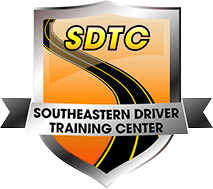Over the course of my career as a police officer I investigated several hundred motor vehicle crashes ranging from minor “fender benders” to tragic fatal crashes. Many of the crashes I investigated involved employees driving company vehicles traveling to or from work or completing company business. I’ve even experienced it personally while being rear ended in a company vehicle one afternoon by an impaired driver. Fortunately, there were no injuries from this collision but many don’t turn out this way.
In fact, when some drivers become involved in a collision with a company vehicle, they begin to see $$. People have a natural tendency to think and assume that they just hit pay dirt because they were struck by a company vehicle and now they can file a civil suit for big dollars. According to The Network of Employers for Traffic Safety (http://trafficsafety.org/road-safety-resources/public-resources/cost-of-motor-vehicle-crashes-to-employers-2015/), in 2013 motor vehicle crash injuries cost employers a staggering 47.4 billion dollars. Some of the most common causes of these crashes are speeding, inattention, and impaired driving. That’s why in my keynote presentation The 3 Most Fatal Crash Causes I highlight the consequences of these behaviors using examples of real life crashes I’ve investigated and stories from my own personal life.
Just think for a moment, how much would it change our world if everyone avoided speeding, distractions and impaired driving? Not only would it have a huge financial impact for families and businesses but it would save lives. Do the math. According to the National Highway Traffic Safety Administration there were over 37,000 crash fatalities in 2016. (https://crashstats.nhtsa.dot.gov/Api/Public/ViewPublication/812580) Over 60% of these crashes were caused by the three previously mentioned behaviors. If everyone avoided these behaviors that would save the lives of nearly 22,000 people. It would literally change the world if everyone did what they were supposed to do. Unfortunately, that’s much easier said than done.
What can employers do to help reduce their risk and exposure to these crashes. Here are a few tips:
- Have policies and guidelines in place: These policies and guidelines set the standard for the employees and make the expectations known. Written policies work a lot like Family Driving Agreements do. Family Driving Agreements set the ground rules and expectations for families with new drivers. They have even been shown to make new drivers drive more responsibly because the expectations are known. The same is true with businesses. Set the expectations, what’s acceptable and what’s not. Expectations such as “No mobile phone use while driving”, “Do not exceed the speed limit” and “All occupants must wear seatbelts”. Employers must set the expectations for employees operating company vehicles and also have consequences in place when these expectations are not met.
- Consistently train employees: Training can be as informal as a shift meeting or as formal as attending a conference with presentations on safe driving. The key is to consistently reinforce the message and the importance of safe driving habits. When I served on the SWAT Team we were always doing reloading and malfunction drills. Why? Because we needed to develop muscle memory and form habits. The same is true with driving. We should consistently remind employees that driving is one of the most dangerous tasks we do each day and we can’t afford to let down our guard.
- Supervisors set the example: Supervisors should be looked up to. Either because of their leadership or because of their status in the company. It’s imperative that they avoid risky behaviors when driving because it only takes one employee to notice that their supervisor isn’t practicing what’s being preached and then the entire initiative is diluted and less effective. Supervisors should be leaders and set the example in every aspect of their job.
- Reward good behavior: Companies should consider some type of reward system for their employees that exhibit safe driving behaviors. If safe driving is such a big deal and is so important (which it is) shouldn’t companies reflect that with some type of safe driving bonus? A yearly $100 bonus would not only boost morale but at the end of the day save the company a lot of money if it avoids a crash involving a company vehicle.
The bottom line is this, driving can be dangerous whether we are doing it in a personal vehicle or a company vehicle. It is certainly much more dangerous when we engage in certain behaviors. A responsible business that cares about their community, employees and their company needs to have a plan in place to encourage their employees to adopt safe driving habits.
